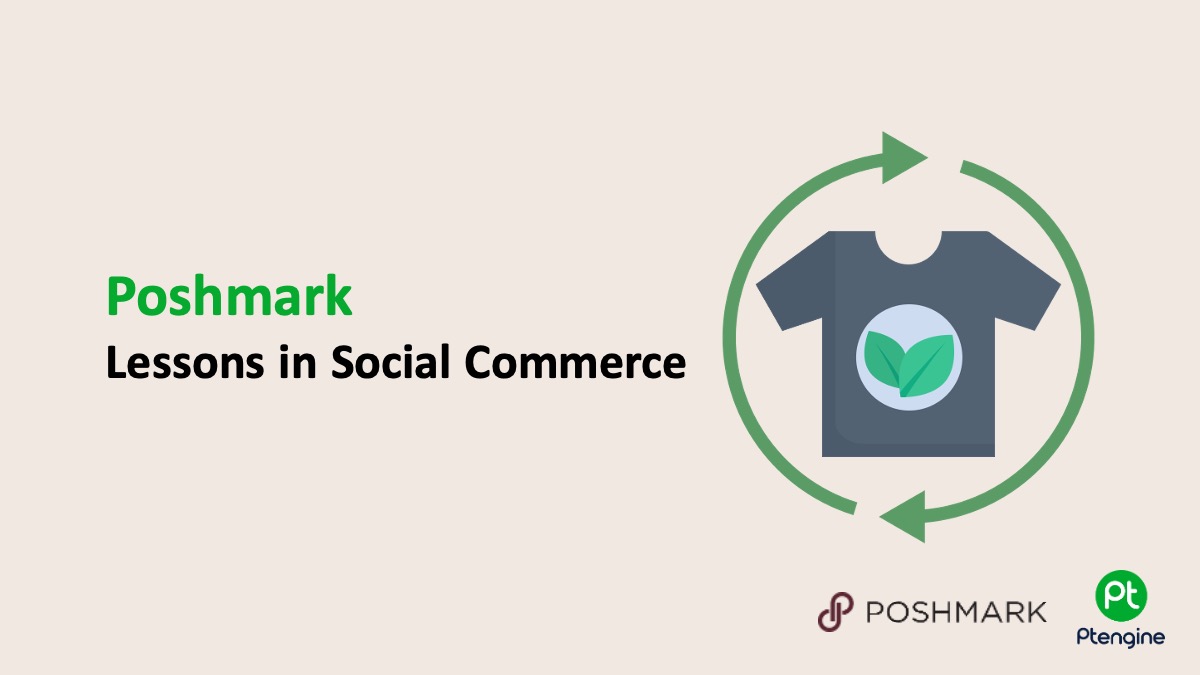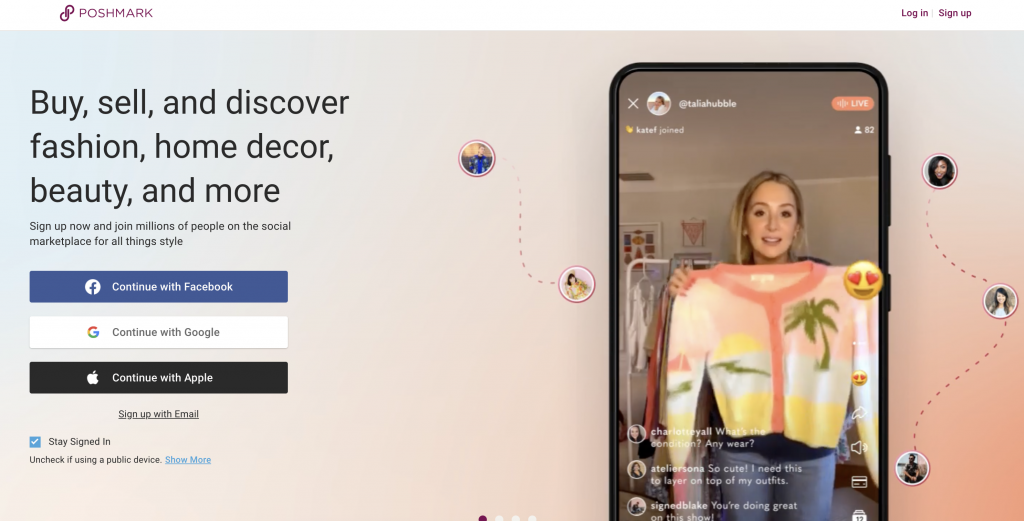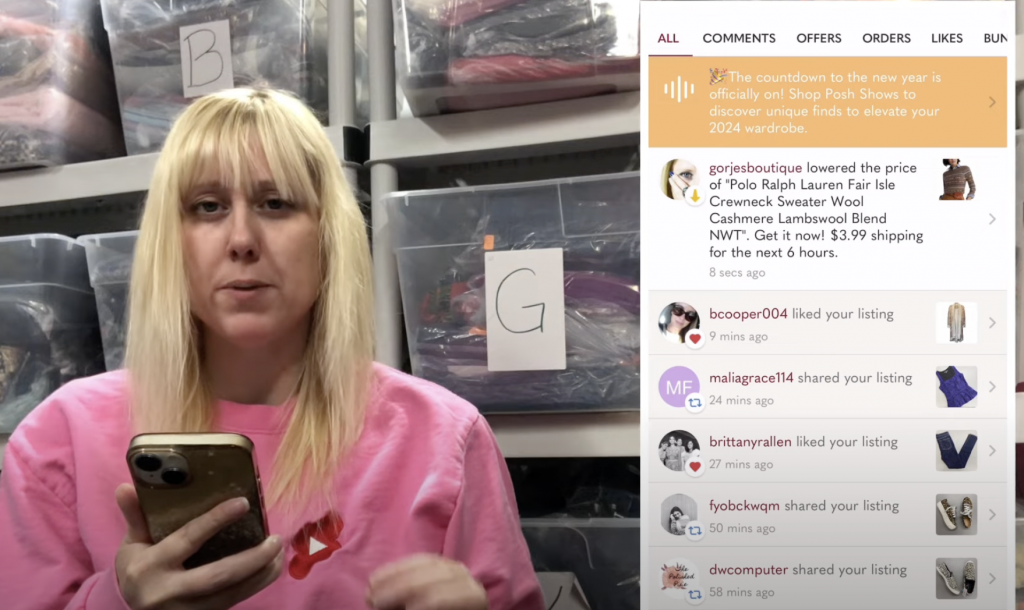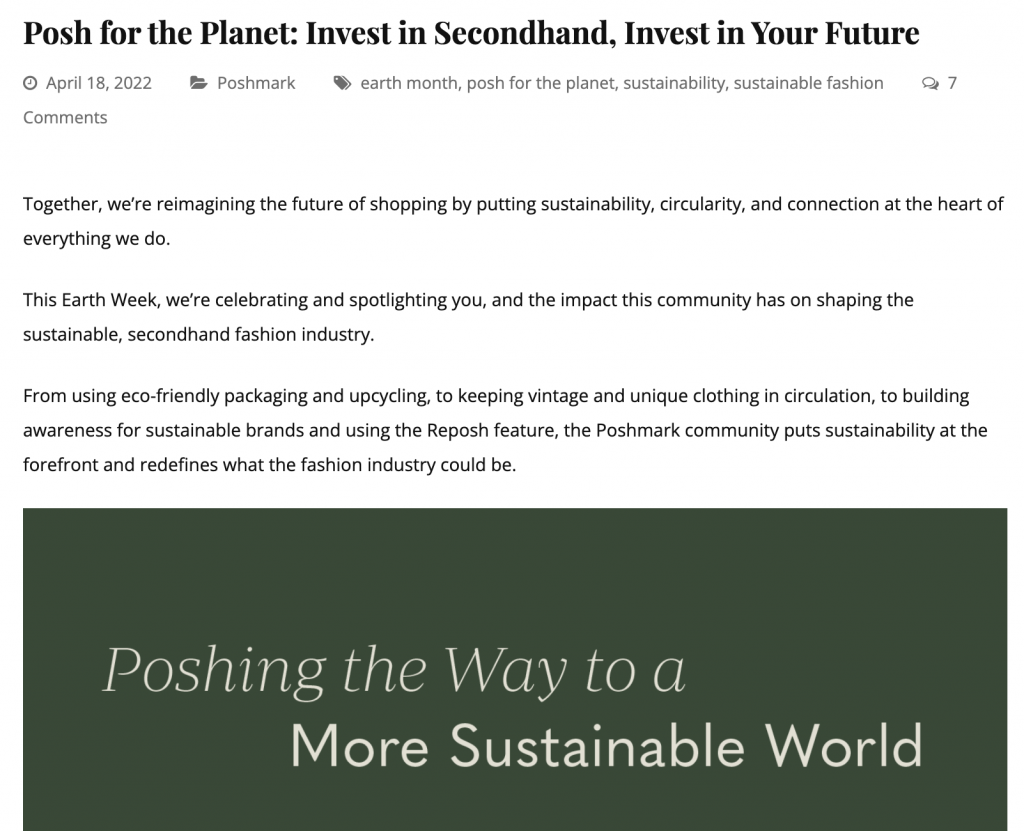blog»Business Strategy»Learn from Poshmark’s Social Commerce Success

Learn from Poshmark’s Social Commerce Success
2025/01/05
You can read this article in about 13 minutes
Introduction
Poshmark has redefined e-commerce by blending shopping with social connections. Launched in 2011, the platform allows users to buy and sell secondhand items while engaging with others in a vibrant community. Unlike traditional marketplaces, Poshmark turns shopping into a social experience, making it fun, interactive, and highly engaging.

For marketers, Poshmark offers valuable lessons in building loyalty and driving growth through community-focused strategies. From gamification and personalized experiences to sustainability messaging, Poshmark has successfully created a platform that resonates with modern consumers.
In this article, we’ll break down Poshmark’s marketing playbook and share insights you can use to create campaigns that connect, engage, and inspire your audience.
1. Blending Social and E-Commerce
Poshmark has transformed online shopping by integrating social elements into every step of the buyer and seller journey. Unlike traditional e-commerce platforms, Poshmark feels like a social network, where users share, comment, and interact. Features like Posh Parties—real-time virtual shopping events—add a layer of excitement and community to the experience.

This social commerce model encourages active participation. Users don’t just browse or buy; they connect with others, discover curated items, and share listings within their network. These interactions create a sense of community and increase engagement.
What you can learn:
- make shopping social: Integrate features like sharing, commenting, or live events to create an interactive experience.
- focus on community engagement: Allow your audience to connect with each other and your brand in meaningful ways.
By combining e-commerce with social networking, Poshmark has created an experience that keeps users coming back. It’s a powerful reminder that adding social elements can enhance both engagement and loyalty.
2. Empowering Sellers as Influencers
Poshmark doesn’t just focus on buyers—it empowers its sellers to become brand ambassadors. Sellers on Poshmark are encouraged to promote their “closets” on social media, share listings within the app, and engage with other users. The Posh Ambassador program rewards active sellers with greater visibility, fostering loyalty and motivation.

This approach transforms sellers into micro-influencers, leveraging their personal networks to attract new users to the platform. Poshmark also provides resources like guides and webinars to help sellers market themselves effectively, making it easy for anyone to succeed.
What you can learn:
- turn users into advocates: Create programs that reward and empower your customers to promote your brand.
- offer support and tools: Provide resources to help your users market themselves and succeed.
By turning its sellers into influencers, Poshmark has built a network of advocates who drive growth organically. It’s a smart way to scale marketing efforts while building trust and authenticity.
3. Building a Community-Centric Platform
Poshmark’s success isn’t just about transactions—it’s about building a sense of belonging. The platform fosters community through interactive features like forums, mentorship programs, and virtual events. One standout initiative is PoshFest, an annual event where buyers and sellers come together to share tips, network, and celebrate their achievements.

This community focus helps Poshmark create a loyal user base. By emphasizing relationships over mere transactions, the brand makes customers feel like they’re part of something bigger.
What you can learn:
- prioritize community building: Create spaces where your users can connect, share, and learn from each other.
- host engaging events: Online or offline events can boost loyalty and deepen customer relationships.
Poshmark proves that building a vibrant community strengthens customer loyalty and turns users into long-term advocates.
4. Personalization through User Behavior
Poshmark leverages user behavior to create highly personalized shopping experiences. By analyzing browsing habits and purchase history, the platform curates feeds, product suggestions, and notifications tailored to individual preferences. This ensures users see items they’re likely to love, keeping them engaged and increasing the chances of a sale.

For instance, Poshmark’s algorithm recommends listings based on a user’s activity. This personalization extends to the search experience, where filters and categories make it easy to find relevant items. Personalized notifications, like price drops on favorited items, keep users coming back.
What you can learn:
- use data to personalize: Leverage browsing and purchase history to recommend relevant products and create a tailored experience.
- keep users engaged: Send timely, personalized notifications to re-engage your audience and drive conversions.
By making every interaction feel tailored, Poshmark builds trust and keeps users loyal. Personalization isn’t just a nice-to-have; it’s essential for creating a standout shopping experience.
5. Increase Engagement with Gamification
Poshmark keeps its users engaged by incorporating gamification into the shopping experience. Features like Posh Parties—real-time, themed virtual shopping events—encourage users to browse, share, and purchase items in a fun and interactive way. Another example is the Closet Clear-Out event, where sellers are motivated to offer discounts and drive sales.

These gamified elements turn routine activities into exciting challenges or events. They create a sense of urgency and community participation, keeping users active on the platform. Gamification also helps sellers boost visibility, creating a win-win for everyone involved.
What you can learn:
- add a fun element: Use gamification to make shopping and selling more engaging and enjoyable.
- leverage urgency: Events like flash sales or limited-time offers encourage quick action.
By making e-commerce fun and interactive, Poshmark creates a highly engaging environment that keeps users coming back for more.
6. Sustainability as a Selling Point
Poshmark’s focus on secondhand fashion aligns perfectly with growing consumer interest in sustainability. By promoting the benefits of buying pre-owned items, Poshmark positions itself as an eco-friendly alternative to fast fashion. This message resonates with environmentally conscious shoppers who want to reduce waste and support circular economies.

The platform regularly emphasizes this in its marketing campaigns, showcasing how buying secondhand reduces the carbon footprint and promotes reuse. Poshmark’s sustainability message isn’t just a trend—it’s a core part of its identity, helping it stand out in a competitive e-commerce market.
What you can learn:
- align with consumer values: Highlight your brand’s sustainable practices to appeal to eco-conscious audiences.
- make sustainability part of your story: Use marketing to educate customers about the positive impact of their choices.
By integrating sustainability into its brand narrative, Poshmark shows how aligning with customer values can drive loyalty and differentiation.
Conclusion
Poshmark’s success offers a masterclass in combining e-commerce with community, personalization, and sustainability. By transforming online shopping into an interactive and social experience, the platform has created a loyal user base and a powerful brand identity.
Key Takeaways:
- Blend social with commerce: Features like Posh Parties turn shopping into a fun and engaging activity.
- Empower your users: Encourage customers to become advocates through programs and incentives.
- Build a community: Foster connections among users to increase engagement and loyalty.
- Personalize through user behavior: Use data to create tailored experiences that resonate with your audience.
- Incorporate gamification: Make shopping interactive to keep users engaged.
- Highlight sustainability: Align with customer values to stand out in a competitive market.
Poshmark’s marketing playbook proves that e-commerce isn’t just about transactions—it’s about building connections and delivering value. Apply these lessons to your own strategies and watch your brand thrive.